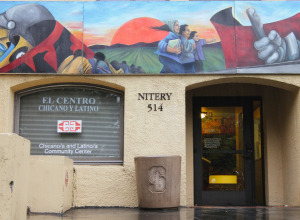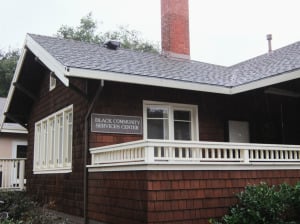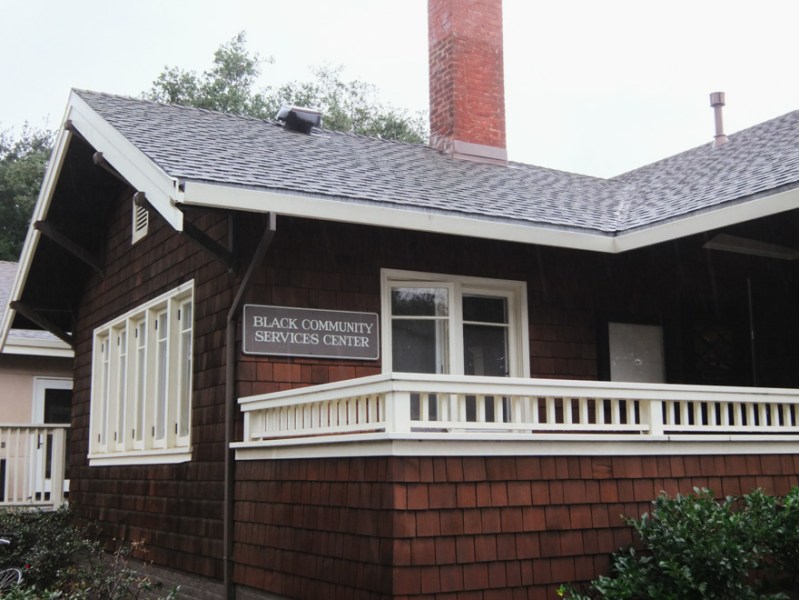Freshman blues are an integral part of the Stanford college experience. From homesickness to culture shock, these feelings vary across a wide spectrum, and it is often hard to find an optimal way of dealing with them.
Although sibling programs are perhaps most well-known for their role in Greek life, they’ve come to fill a unique role in other communities on campus, acting as a way to facilitate the integration of freshmen by providing them with mentorship and guidance from upperclassmen within their community group.
In this piece, The Daily explores the history, characteristics and varying degrees of success of some of the sibling programs on campus.
Sanskriti (Stanford’s Undergraduate South Asian Association)
According to Kunal Sangani ’16, 2013-2014 Sanskriti Chair, the Sanskriti SibFam program has “some history,” but was discontinued after the 2012-13 academic year due to “a lack of consistency” in sibling interactions.
“A lot of people were disappointed that they touched base with their families at the beginning of the year and didn’t really have any follow-through.” Sangani said.
This was mostly due to the fact that Sanskriti didn’t have many events aimed at fostering these connections.
“We put in a lot of accountability measures,” Sangani said. “Our decision to put individual pairings into larger families was…for the convenience of accountability.”
This year, Sanskriti has a total of eight sibling families (SibFam), averaging 13 to 15 members, with many freshmen being paired with two big sibs. The goal is for each big sibling to meet with their little sibling at least once a week.
Sangini expressed his wish for the SibFam program to become a “home” for members of the community.
“It’s really important to have people you can share a lot of the facets of your upbringing with,” Sangini said. “The South Asian community is one of the few large cultural communities at Stanford that doesn’t have an ethnic-themed dorm or its own club house space. [Having] a regrouping place for Sanskriti and for South Asians is important.”
Activities Sanskriti Sibling families have engaged in together over this quarter have included Indian grocery store runs, outings to get ice cream of various Indian flavors and Taco Bell runs.
“I think a lot a lot of Asian-American sibling families tend to roll out to boba together and I think Taco Bell is our equivalent,” Sangani said.

Latino Big Sib-Little Sib
For Oscar Sandoval ’15, one of the three current coordinators for El Centro’s sibling program, getting involved in the Latino Big Sib-Little Sib program as a freshman helped him deal with the unfamiliarity that Stanford represented.
“I grew up in a mostly Latino neighborhood so coming into Stanford was a big culture shock for me,” Sandoval said. “A lot of [my sibling family members] had similar backgrounds as I did [and it was] comforting to know that there were other students like me at Stanford.”
He is also in a sibling family this year. “I see my family members all the time…we’re really close…we even joke about getting tattoos,” Sandoval said.
As a coordinator for the program, Sandoval helps make the sibling matches based on background, academic interests and activities they would like to do as a family.
This job provides him with a veritable sense of fulfillment.
“I take a lot of pride now in [being a coordinator] because I realize…I’m helping giving these experiences to other freshman,” Sandoval said.
According to Sandoval, the best thing about the program is its ability to act as “a catalyst for students to carve out their own space at Stanford”.
The program, Sandoval said, needs to be more balanced. This year, twice as many upperclassmen signed up as freshmen, a ratio which Sandoval hopes to “even out” in the coming years.

BROC (Black Recruitment Orientation Committee)
According to Andrew Endoimioya ’17, BROC coordinator, the BROC Sibling program has been active ever since BROC was founded in 1976.
“It’s kind of a chance to plug in the new freshman into the…black family on campus and it is a chance for mentorship or just like having somebody that you can talk to about things that you might not fully understand at Stanford,” Endoimioya said.
Endoimioya emphasized the feeling of “legacy” that accompanies the program, due to which little sibs feel “not just the obligation but also the responsibility” to return to the program as big sibs.
“I would definitely say 90 percent of people who are littles would sign up to be big sibs,” Endoimioya said. Big Sibs tend to be sophomores and sometimes juniors.
Lauren Lockett ’17 joined the BROC sibling program at the beginning of freshman year. She pointed to the care put in making sure there were similarities between her and her big sibling as key to ensuring a good experience.
But she thinks the program could be improved through more opportunities to get together as a group, and additional guidelines to help standardize the program experience.
Endoimioya pointed to a lack of funding as one of the reasons for the scarcity of sibling events.
A3C (Asian-American Activities Center)
Asian American Sib program (AASIB) was first created in 1975 through the Asian American New Student Orientation Committee. In 1993, it became an official student group, and in 2013 it became a department-sponsored program under the Asian-American Activities Center (A3C).
“The main purpose of our sib program is to provide freshman and transfers transitioning to Stanford…an upperclassman group of mentors,” said Rachel Cao ’15, a current AASIB program coordinator.
The application gets sent out with the regular welcome packet to all the Asian-American identifying incoming freshmen and transfers and they can choose whether or sign up or not.
Pairing generally happens during NSO week, and the sibling families are revealed during the A3C’s “We are family” program during NSO.
Like within the BROC program, sophomores are the main source of big siblings, and certain sibling families choose to keep track of family lineage, and indulge in mass hangouts.
She thinks one way of improving the program would be to “set expectations” from the very start so as to standardize the expectation base for Big and Little sibs alike.
Bechtel
This year marks the second run of the International Undergraduate Community (IUC) iSib program, supported by Bechtel International Center.
Generally, iSib families are constituted of four Stanford students, two upperclassmen “bigs” and two freshmen “littles.” These students are matched by common interests, background and “what they hope to get out of their Stanford career,” according to Annie Kong ’15, vice president for operations for IUC.
“I’m really glad that iSib families matches international students not just based on their national origin but also based on their other interests and the things they want to achieve at Stanford.” Kong said.
Another main difference between iSib and other similar SibFam programs on campus is the emphasis on the unique challenges faced by the international community.
“International students have a particular struggle adjusting to the life of not just a new university but a different culture as well,” Yongjian Si ’15 said. “Freshman year is a struggle sometimes and it’s great to have upperclassmen form a social circle which helps them navigate the waters at Stanford.”
This idea meshes with the IUC’s “greater goal of making a longer-lasting impact on the international undergraduate community at Stanford” as expressed by Selamile Dlamini ’15.
“I felt like I needed an international community with the culture shock that I came into Stanford with,” Victor Verdejo ’15 said.
According to Verdejo, the fact that members of the international community all come to the United States from different perspectives means that international students need more support than other communities where people have more in common upfront.
Like other sibling programs, iSib has had some trouble gaining momentum.
The members of Si’s iSib family were not present at iSib Revelation, and he has not met them yet. Indeed, some siblings never meet each other in person, a fact which Si explains by the oft-quoted phrase: “People get busy at Stanford.”
“I never formally got their contact information,” he said. “It’s up to the organization team. I’m excited to meet my little sibs, at the same time I haven’t been active in reaching out because they told us they would send us information. It’s been a little disorganized.”
Contact Nikhita Obeegadoo at nix19 ‘at’ stanford.edu
